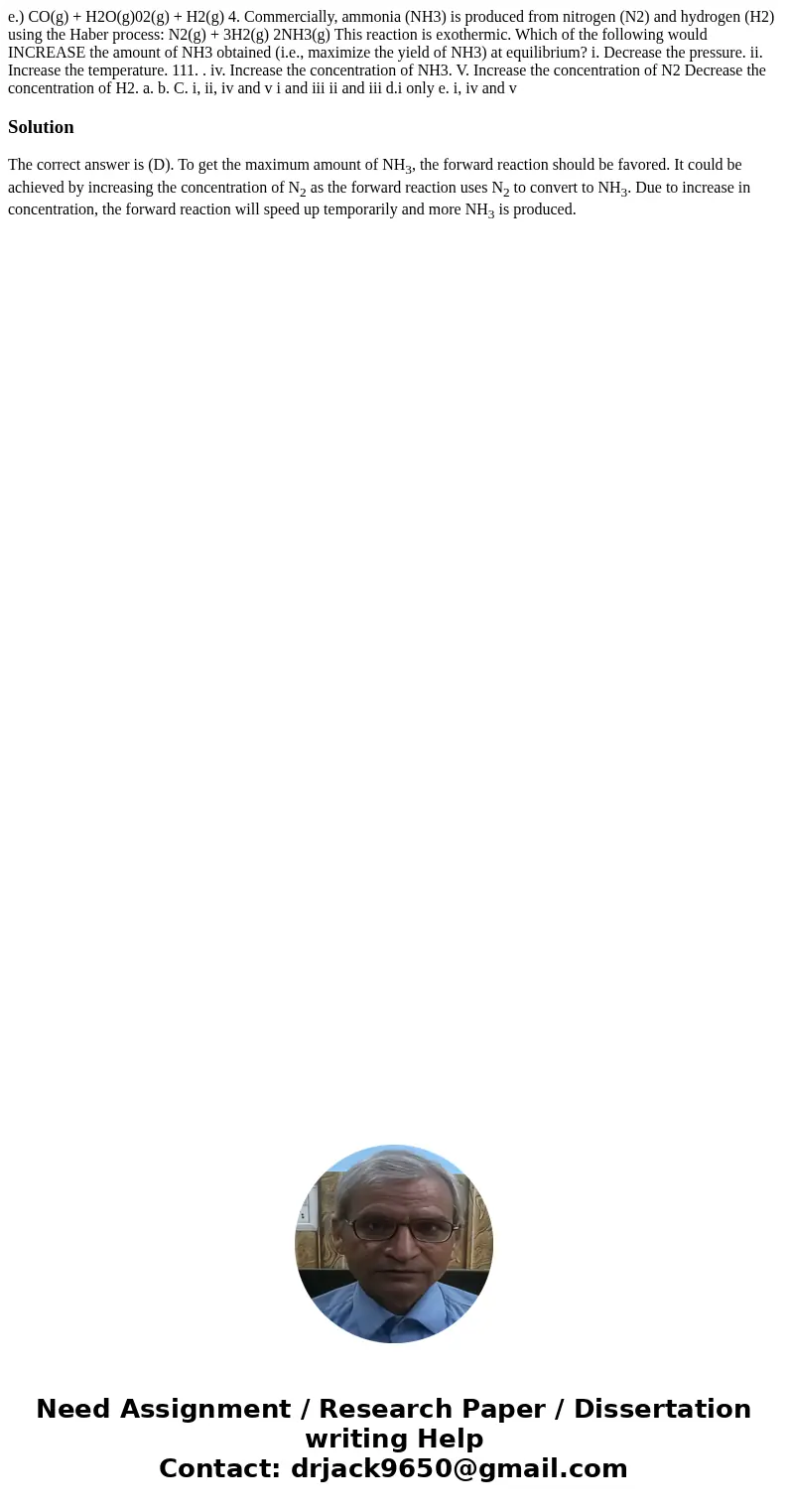e COg H2Og02g H2g 4 Commercially ammonia NH3 is produced f
e.) CO(g) + H2O(g)02(g) + H2(g) 4. Commercially, ammonia (NH3) is produced from nitrogen (N2) and hydrogen (H2) using the Haber process: N2(g) + 3H2(g) 2NH3(g) This reaction is exothermic. Which of the following would INCREASE the amount of NH3 obtained (i.e., maximize the yield of NH3) at equilibrium? i. Decrease the pressure. ii. Increase the temperature. 111. . iv. Increase the concentration of NH3. V. Increase the concentration of N2 Decrease the concentration of H2. a. b. C. i, ii, iv and v i and iii ii and iii d.i only e. i, iv and v 
Solution
The correct answer is (D). To get the maximum amount of NH3, the forward reaction should be favored. It could be achieved by increasing the concentration of N2 as the forward reaction uses N2 to convert to NH3. Due to increase in concentration, the forward reaction will speed up temporarily and more NH3 is produced.

 Homework Sourse
Homework Sourse